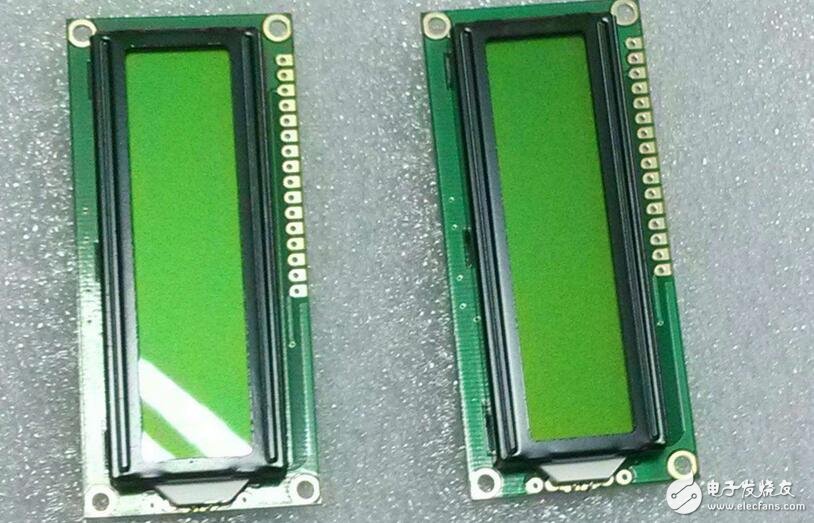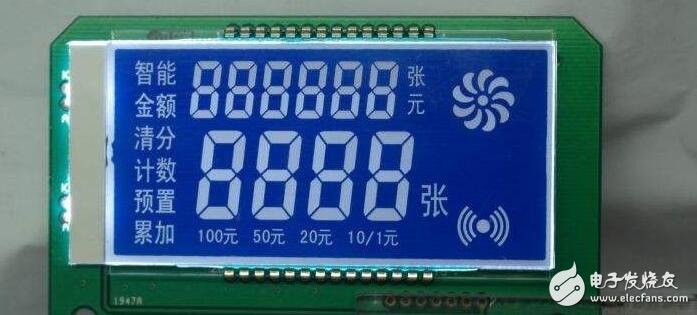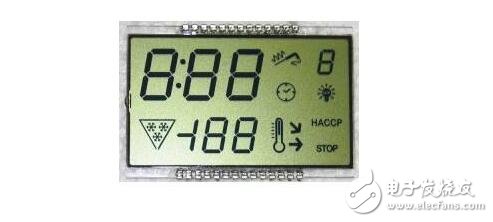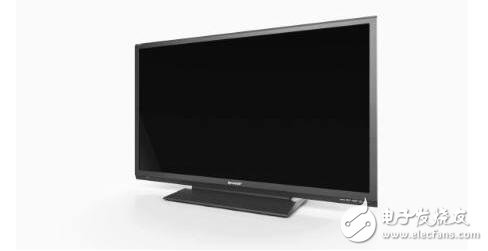LED substrate material and guardrails make up some common sense you must know!
LED illumination is LED illumination and is a semiconductor solid-state light-emitting device. It uses a solid semiconductor chip as a luminescent material, and in the semiconductor, composites emit excess energy to cause photon emission, and directly emit red, yellow, blue, green, cyan, orange, purple, and white light. LED lighting products are lighting fixtures that are manufactured using LEDs as light sources. Since LED has a long life, safety, reliability, environmental protection, energy saving, and various colors, it has been recognized by the world since the invention of LED. The world has invested a lot of manpower and financial resources to research and develop.
China's LED industry started in the 1970s. After more than 40 years of development, China's LED industry has initially formed a relatively complete industry including LED epitaxial wafer production, LED chip preparation, LED chip packaging and LED product application. chain. Driven by the "National Semiconductor Lighting Project", China's LED downstream industry has made great progress, but the upstream LED industry still needs further investment to catch up with Japan, the United States and Europe.

Most of today's chips are GaN. There are many ways to grow GaN. However, since the single crystal production process has not been solved, epitaxial growth is still performed on the substrate, relying on organometallic meteorological deposition on the related shaped support substrate. Growing [1]. Thus, the choice of substrate materials is our primary consideration. The choice of which substrate to use depends on the requirements of the device and LED device [2]. For the time being, good substrate materials should have the following nine characteristics:
(1) The structural characteristics are good, the crystal structure of the wafer material and the substrate are the same or similar, the lattice constant mismatch is small, the crystallization property is good, and the defect density is small.
(2) The interface characteristics are good, which is beneficial to the nucleation of the wafer material and strong adhesion.
(3) It has good chemical stability and is not easily decomposed and corroded in the temperature and atmosphere of wafer growth.
(4) Good thermal performance, good thermal conductivity.
(5) Good conductivity, which is beneficial to the preparation of substrate electrodes [3].
(6) The optical performance is good, and the light emitted by the fabricated device is absorbed by the substrate to be small.
(7) Good mechanical properties, easy to process, including thinning, polishing and cutting.
(8) The price is low.
(9) Large size, generally requires a diameter of not less than 2 inches.
Table 1 lists the structure and lattice constant of common substrate materials [4].
Substrate material typeIt is currently common to grow GaN [5] such as on sapphire, SiC, Si, GaAs or other substrate materials.
Sapphire substrate materialThe most common substrate currently used for gallium nitride growth is sapphire.
The composition of sapphire is alumina (Al2O3), which is formed by a combination of three oxygen atoms and two aluminum atoms in a covalent bond mode, and its crystal structure is a hexagonal lattice structure. It is often used in A-Plane, C-Plane and R-Plane. Since sapphire has a wide optical penetration band, it has excellent light transmission from near-ultraviolet light (190 nm) to medium-infrared light. Therefore, it is widely used in optical components, infrared devices, high-intensity laser lens materials and reticle materials. It has high sound speed, high temperature resistance, corrosion resistance, high hardness, high light transmission and high melting point (2045 ° C). It is a material that is quite difficult to process and is therefore often used as a material for photovoltaic elements. The quality of ultra-high brightness white/blue LEDs currently depends on the material quality of gallium nitride epitaxial (GaN), while the gallium nitride epitaxial quality is closely related to the surface quality of the sapphire substrate used, sapphire (single crystal Al2O3) C The lattice constant mismatch between the surface and the III-V and II-VI deposited films is small, and meets the requirements of high temperature resistance in the GaN epitaxial process, making the sapphire wafer a key material for making white/blue/green LEDs. .

Czochralski method, referred to as CZ method. The raw material is first heated to a melting point and then melted to form a molten soup, and then a single crystal seed is contacted to the surface of the molten soup to form a supercooling due to a temperature difference at a solid-liquid interface between the seed crystal and the molten soup. The melt then begins to solidify on the surface of the seed crystal and grow and crystallize the single crystal of the same crystal structure. The seed crystal is pulled up at a very slow speed and rotates with a certain rotation speed. As the seed crystal rises upward, the melt gradually solidifies on the liquid-solid interface of the seed crystal, thereby forming an axisymmetric single. Crystal ingots.
The Kyropoulos method, referred to as the KY method, is called the bubble method in China. The principle is similar to the Czochralski method. The raw material is heated to the melting point and then melted to form a molten soup. The seed crystal (SeedCrystal, also known as the seed crystal rod) is contacted to the surface of the molten stone. a single crystal that grows at the solid-liquid interface with the molten soup and crystallizes the same crystal structure. The seed crystal is pulled up at a very slow rate, but the crystal is pulled up for a period of time to form a crystal neck, to be melted. After the solidification rate of the interface between the soup and the seed crystal is stabilized, the seed crystal is no longer pulled up and does not rotate. The single crystal is gradually solidified from above from above by controlling the cooling rate, and finally solidified into a whole single crystal crystal crucible.

Advantages of sapphire: (1) mature production technology, good device quality; (2) good stability, can be used in high temperature growth process; (3) high mechanical strength, easy to handle and clean.
Insufficient sapphire: (1) lattice mismatch and thermal stress mismatch, will produce a large number of defects in the epitaxial layer; (2) sapphire is an insulator, two electrodes are fabricated on the upper surface, resulting in a reduction in effective light-emitting area; (3) The lithography and etching process are added, and the manufacturing cost is high.
Silicon carbide substrate materialLED chip of silicon carbide substrate (CREE company specializes in using SiC material as substrate), the electrode is L-shaped electrode, and the current flows longitudinally. Devices fabricated using such substrates have very good electrical and thermal conductivity properties, which facilitates the fabrication of large power devices with large areas.
Advantages of silicon carbide: The thermal conductivity of silicon carbide is 490W/m·K, which is more than 10 times higher than that of sapphire substrate.
Insufficient silicon carbide: Silicon carbide is expensive to manufacture, and its commercialization requires lowering the corresponding cost.
Silicon substrate materialCompared with sapphire and SiC, Si materials have the advantages of low cost, large area, high quality, electrical and thermal conductivity, and the silicon process technology is relatively mature. The growth of GaN film on Si substrate is expected to realize the integration of photoelectrons and microelectronics. Moreover, S substrates are very inexpensive, the fabrication process is mature, and can be obtained over a large area; and, using these substrates to grow GaN materials, it is expected that GaN photovoltaic devices will be integrated with mature Si and GaAs electronic devices in the future. However, due to the large lattice mismatch and thermal mismatch between the Si substrate and the GaN epitaxial layer, this causes a large amount of dislocations and cracks in the GaN material on the Si substrate, which is the growth of GaN on the Si substrate. Research has set obstacles. Advantages of Silicon Substrate: Silicon is a good conductor of heat, so the thermal conductivity of the device can be significantly improved, thus extending the life of the device. The silicon substrate vertical chip uses silver as the P electrode. Compared with the sapphire chip, ITO is used as the P electrode. The conductivity is improved by more than 10 times. It has good current spreading characteristics, low voltage and high light efficiency, and can be used under high current. jobs. Silicon has a thermal conductivity five times that of sapphire. Good heat dissipation makes silicon substrate LEDs have high performance and long life. At the same time, the silicon substrate can achieve non-destructive peeling, eliminating the stress of the substrate and the gallium nitride material layer. The silicon substrate chip has N face up, single side light without side light, the light emitting surface is Lambertian distribution and easy to match. The characteristics of secondary optics are more suitable for directional illumination. The silicon substrate high power LED chip is very suitable for ceramic eutectic packaging.

Insufficient silicon substrate: Ceramic eutectic packaging is a high-end packaging technology in the industry, requiring high and difficult points.
Other substrate materials
Gallium nitride substrate
The most ideal substrate for GaN growth is GaN single crystal material, which can greatly improve the crystal quality of the epitaxial film, reduce the dislocation density, improve the working life of the device, improve the luminous efficiency, and improve the working current density of the device. However, it is very difficult to prepare a GaN bulk single crystal, and there has been no effective method so far.
Zinc oxide substrateSince zinc oxide has similar properties to GaN, the mismatch degree of ZnO with respect to GaN in the a-axis direction is 1.9%, and the degree of mismatch with GaN in the c-axis direction is 0.4%. Compared with sapphire, ZnO has a small mismatch and good matching. In addition to this, ZnO has an advantage of being easy to prepare and easily corroded by acetic acid. In some applications, the GaN layer can be separated from the substrate by selective etching of ZnO [4]. At the same time, since zinc oxide itself is also an important electroluminescent material, its development advantages are obvious compared to other materials.
Lithium aluminate substrateLiAlO2 is one of the most promising substrate materials, and the structure of tetragonal γ-LiAlO2 is close to that of GaN.
Because γ-LiAlO2 has a low coefficient of thermal expansion, the buffer layer is not required to eliminate stress during epitaxial film growth to reduce the difference in density. In the preparation of the substrate material, the (100) plane and (001) of LiAlO2 are compared. On the surface, it is found that the (001) surface is prone to many cracks and scratches during polishing, and the main reason is because γ-LiAlO2 is very close to the (001) plane structure of GaN in the (100) plane structure.
Because the (100) surface is easier to grind and polish, and γ-LiAlO2 is slowly corroded by water, water can be used as a polishing liquid in the polishing process [5], thus reducing the vegetation cost of the substrate, Hellman Et al. [6] have successfully grown GaN thin films on LiAlO 2 substrates. Therefore, lithium aluminate has the most room for development in future applications.
ConclusionAs the cornerstone of the technological development of the semiconductor lighting industry, substrate materials are the core of the semiconductor industry and have an important position. Among them, sapphire and silicon carbide are currently used as substrate materials. Future substrate materials are currently not mass-produced due to cost or equipment, and there is huge room for development in the future.

Monochrome LED guardrail lights are generally referred to as LED outline lights, LED guardrail tubes; colorful we call LED digital tubes;
LED digital tube is divided into: internal control and external control according to the control method; the difference is whether there is a separate signal connector and power connector; the signal connector generally uses a four-core signal connector, the design principle is similar; the power connector uses two cores.
LED digital tube can be divided into single segment, three segments, six segments, eight segments, twelve segments, sixteen segments, and some twenty-four segments in the market. Higher number of segments. Commonly used are six paragraphs, eight paragraphs, and sixteen sections.
The so-called segment refers to the segmentation. The true six segment can be divided into six segments. If it is effective, it can be said to be a pixel, such as a true six-segment 108 lamp, that is, 18 lamp beads are a pixel, or 1 paragraph; the 16-segment 144 lights are composed of 16 pixels (9 lights).
Single segment LED digital tubeTechnical parameters: D50*37*1000MM, transparent/milk white PC outer tube, 108 lamps/144 lamps; voltage: 220V/24V
Effect: the overall colorful gradient, jump effect; single paragraph can not produce water flow effect;
Application: Applicable to some office buildings with low requirements or government departments; the bottom scan effect can be achieved by numbering.
Three-segment LED digital tubeTechnical parameters: D50*50*1000MM, transparent / milk white PC outer tube, 108 lights; voltage: 220V
Effect: the overall colorful gradient, jump effect; single flow effect;
Application: Applicable to some office buildings with low requirements or government departments;
External control true six-segment LED digital tubeTechnical parameters: D50*50*1000MM, transparent / milk white PC outer tube, 108 lights / 144 lights; voltage: 24V;
Effect: through the controller can produce colorful gradient, jump effect; running water, scanning, chasing, tailing, opening and closing, full color floating effect;
Application: Applicable to KTV, hotels and other large commercial buildings, the outline of the building is bright, and it is also suitable for the lighting of the guardrails on both sides of the bridge or highway;
True six-segment external control LED digital tube; six segments can be clearly separated on the tube, but the six segments are constantly changing, don't misunderstand.
External control true eight segment LED digital tubeTechnical parameters: D50*50*1000MM, transparent / milk white PC outer tube, 144 lights; voltage: DC12V;
Effect: through the controller can produce colorful gradient, jump effect; running water, scanning, chasing, tailing, switch door, full color floating effect; can also do digital signboard, can produce all kinds of patterns.
Application: Applicable to KTV, hotels and other large commercial buildings, the outline of the building is bright, LED digital tube screen signboard production; also suitable for the lighting of bridges or highways on both sides.
The true eight-segment external control LED digital tube; the tube can be clearly divided into eight segments, but the eight segments are also constantly changing.
External control 16-segment full color LED digital tube144 beads LEDS (ultra high brightness lamp beads)
Voltage: DC12V
Wattage: 12W
Specification: D50*50*1000mm
Material: imported PC outer tube (milk tube); full wave fiber PCB board
Effects: Gradient, flicker, scan, chase, and water; and play various animations and videos, patterns and text.
Control method: CF card controller, eight-way signal connection, no need for sub-control, can control 512M
Applications: Bridge decorative lighting, building outlines, full-color digital signage, and other areas where the city needs decorative lighting. This product is especially suitable for use in large dynamic photoreceptor belts, which can produce rainbow-like effects.
Disposable electronic cigarettes
vape e cigarette device,vape disposable puff bar,vape disposable
Shenzhen Aierbaita Technology Co., Ltd. , https://www.aierbaitavape.com